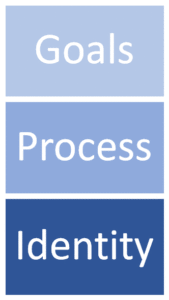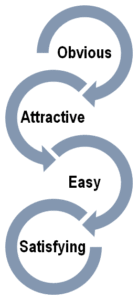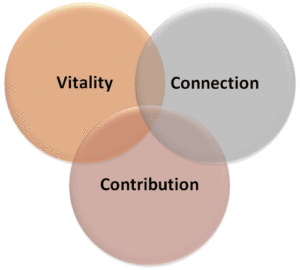What is the most reliable predictor of accelerated performance? Intelligence? Good genes? Great coaching? According to Roy Baumeister and John Tierney in Willpower: Rediscovering the Greatest Human Strength, the answer is self-control.
 In the famed “marshmallow test,” psychologist Walter Mischel placed very young children in a room with one marshmallow. The children were told that if they left the marshmallow alone while the researcher exited the room, they would be rewarded with a second marshmallow upon the researcher’s return. Later in life, children who successfully delayed gratification were found to be more popular, earn higher salaries, have lower body mass index (BMI), be prone to less substance abuse, and have more stable relationships.
In the famed “marshmallow test,” psychologist Walter Mischel placed very young children in a room with one marshmallow. The children were told that if they left the marshmallow alone while the researcher exited the room, they would be rewarded with a second marshmallow upon the researcher’s return. Later in life, children who successfully delayed gratification were found to be more popular, earn higher salaries, have lower body mass index (BMI), be prone to less substance abuse, and have more stable relationships.
Because self-mastery is such a critical life skill, it’s useful to understand the mechanics of how it plays out in the human body. In particular, we each have a finite amount of willpower. It gets depleted when:
- Managing thoughts: It takes effort to focus our minds on the task at hand (and shut out other thoughts), to process and store information, to evaluate data when making decisions, and any other mindful event.
- Exercising emotional control: It is effortful to process anger, frustration, disappointment, stress, etc. and stay on task and/or work ourselves into pleasant companionship. Even just “being nice” can be effortful when we’re placed in unfamiliar territory.
- Navigating impulses: We spend upwards of 25% of our waking hours resisting temptation – specifically, the urge to eat, the urge to sleep, and the urge to seek pleasure. While we can’t control the impulses, we can determine how we’ll respond to them.
- Managing performance: In addition to focusing on the task at hand, we need to attend to the speed, accuracy, and quality of our work, manage external and internal pressure, and prioritize competing demands on our time.
The more we use up our willpower, the less able we are to make good decisions. We’ll postpone, procrastinate, look for an easy out, or simply go with the status quo. We’re also more likely to fail in our efforts to resist temptation, especially sugary foods. With glucose depleted through exercise of willpower, the body starts to crave sweet things to eat. Even an expectation of elevated demands on willpower can trigger a raging sweet tooth. While we can’t get around the fact that we have a human mind that exists in a biological body, we can learn to “feed the beast” in a way that wards off unhealthy cravings:
- Focus on foods with a low glycemic index. They’ll provide a slow burn that will maintain a steady supply of glucose for the brain.
- Get adequate rest. Sleep reduces the body’s demand for glucose and creates the space for our willpower reservoir to replenish.
- When sick, give the immune system first dibs on glucose. We can mitigate the overall demand for glucose by resting, minimizing stress, letting others take care of us, and deferring major decisions.
Beyond simply taking good care of ourselves, we improve self-control by establishing goals, setting clear boundaries, and sticking with them. When we’re juggling competing demands on our time, we worry too much, get less done, feel bad ourselves, and get less sleep. It drains our reservoir of willpower and introduces needless mental drag. We need to decide which goals and behaviors will do us the most good, create reasonable action plans, and then commit to doing them with focused attention. A mind at peace can get more done and be less reactive to the unexpected.
“Stuff” will crop up – i.e., things that show up in our physical or psychological world for which we haven’t determined an outcome or next step. Such things are best handled by the 4 D’s – Do it, Delegate it, Drop it, or Defer it. The latter can be placed in a folder corresponding to the day of the month during which you’ll give it further consideration. By using this system, you de-clutter your mind while creating the means to address important matters at the right time with the right level of attention.









